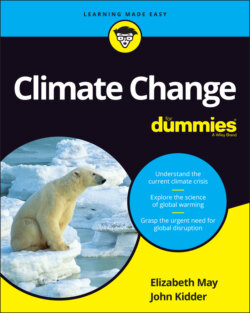Читать книгу Climate Change For Dummies - Elizabeth May - Страница 21
Latin America
ОглавлениеSouth America has seen some strange weather in the past few years. Drought hit the Amazon in 2005, Bolivia had hail storms in 2002, and the torrential rainfalls lashed Venezuela in 1999 and 2005. In 2003, for the first time ever, a hurricane hit Brazil. More recently, the World Meteorological Association says:
“Latin America and the Caribbean (LAC) is among the regions most challenged by extreme hydro-meteorological events. This was highlighted in 2020 by the death and devastation from Hurricane Eta and Iota in Guatemala, Honduras, Nicaragua, and Costa Rica, and the intense drought and unusual fire season in the Pantanal region of Brazil, Bolivia, Paraguay, and Argentina. Notable impacts included water and energy-related shortages, agricultural losses, displacement and compromised health and safety, all compounding challenges from the COVID-19 pandemic.”
Other changes in Latin America may be attributable to global warming. Rain patterns have been changing significantly. More rain is falling in some places, such as Brazil, and less in others, such as southern Peru. Glaciers in the Andes Mountains and across the continent are melting. This glacier loss is a particular problem in Bolivia, Ecuador, and Peru, where many people depend on glacier-fed streams and rivers for drinking water and electricity from small-scale hydroelectric plants. (See Chapter 9 for more about how global warming will affect humans.)
Scientists project that the worst is yet to come. The IPCC models anticipate that about half of the farmland in South America could become more desert-like or suffer saltwater intrusions. If sea levels continue to rise at a rate of 0.08 to 0.12 inches (2 to 3 millimeters) per year, it could affect drinking water on the west coast of Costa Rica, shoreline tourism in Mexico, and mangroves in Brazil.
The threat to the Amazonian rainforest from logging and burning has attracted the concern of celebrities such as Sting and Leonardo DiCaprio. But human-caused global warming could potentially do more damage than loggers. By mid-century, the IPCC predicts that parts of the Amazon could change from wet forest to dry grassland, and that reduction in rainfall during dry months will reduce agricultural yields. Recent scientific reports confirm even a 2 degree C temperature increase could wipe out the Amazon. (We cover how ecosystems will be affected by climate change in Chapter 8.)
